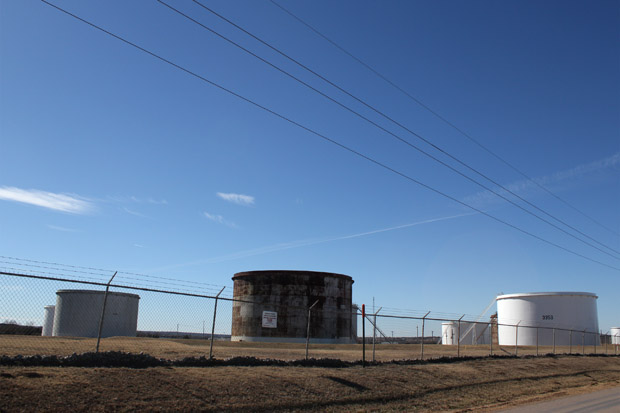
Crude oil tank farm in Cushing, Okla.
Joe Wertz / StateImpact Oklahoma


Crude oil tank farm in Cushing, Okla.
Joe Wertz / StateImpact Oklahoma
The Cushing oil hub is crowded with hulking oil tanks, miles of pipeline and countless pumps, compressors and other equipment used to ferry around the roughly 80 million barrels of crude stored there.
Oklahoma has experienced a swarm of earthquakes, which seismologists say might be triggered by disposal wells used by the oil and gas industry, and it’s not hard to imagine the havoc a little earth-shaking might have on the high-profile oil hub.
But the biggest threat to Cushing is still tornadoes, not earthquakes, the Journal Record‘s D. Ray Tuttle reports. Here’s why:
The standards for building oil storage tanks are exacting, Carl Karner, the senior engineering specialist for Tulsa-based Rose Rock Midstream, tells the paper. Storage companies follow federal and state laws, and also adhere to the standards developed by the American Petroleum Institute for the construction and maintenance of their facilities.
The API standards have specific seismic design criteria for this region, Springer said. Tanks are designed to withstand an earthquake 1,000 times stronger than the magnitude 5.6 quake that struck near Prague in November 2011. That quake was the largest in state history.